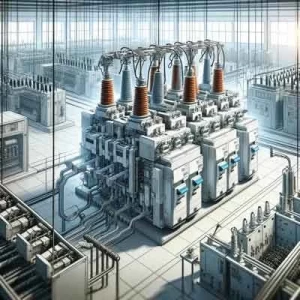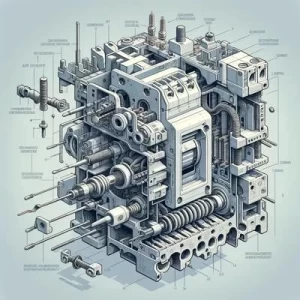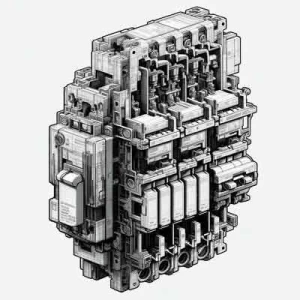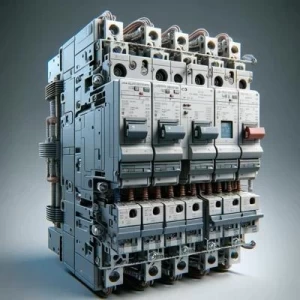Principle of Operation of an Air Circuit Breaker

The principle of operation of an Air Circuit Breaker (ACB) fundamentally revolves around the management and extinction of the electric arc that forms when interrupting a circuit. This process is critical to the ACB's role in protecting electrical circuits from overloads, short circuits, and faults. The efficient interruption of the arc is achieved through a series of mechanisms that increase the arc voltage beyond the supply voltage, effectively extinguishing the arc and preventing damage to the system. This article explores the sophisticated operation of ACBs, highlighting the key strategies used to manage the arc: cooling the arc plasma, arc splitting, and lengthening the arc path.
Cooling the Arc Plasma
The initiation of the arc occurs when the contacts within the ACB separate, creating a conductive plasma channel. The temperature and kinetic energy of the particles within this plasma are initially very high, allowing the arc to sustain itself and conduct electricity. By actively cooling this arc plasma, the ACB reduces the particles' motion and energy, increasing the difficulty for the arc to maintain its conductivity. Cooling is achieved through various means, including the use of arc chutes that dissipate heat, and by elongating the arc's path, forcing it through materials or spaces that absorb its energy. This cooling effect necessitates a higher voltage to sustain the arc, contributing to its eventual extinction.
Arc Splitting
Another crucial mechanism employed by ACBs is arc splitting. This process involves dividing the original arc into several smaller arcs in series. By splitting the arc, the overall voltage required to maintain these multiple arcs increases significantly. This is due to the cumulative effect of the voltage drops across each of the smaller arcs, which together exceed the supply voltage. Arc splitting is facilitated by the design of the arc chute, which contains barriers or splitters that break up the arc as it tries to pass through. This innovative approach not only increases the voltage requirement for the arc's sustainability but also enhances the cooling process by distributing the arc's energy more broadly.
Lengthening the Arc Path
The principle of lengthening the arc path involves increasing the distance over which the arc must travel between its points of origin and extinction. By doing so, the resistance along the arc path increases, which in turn requires a higher voltage to maintain the arc. This method is effective in raising the arc voltage to a level where the available supply voltage is insufficient to sustain it, leading to the arc's extinguishment. The ACB achieves this through the design of the arc chute and the movement of the contacts, which draw the arc over a longer route before it can be quenched.
Operational Sequence of an ACB
The operational sequence of an ACB during an interruption cycle begins with the separation of the main contacts. This initial separation interrupts the primary current flow and initiates the formation of the arc. Subsequently, the arcing contacts, designed to withstand the thermal and mechanical stress of the arc, separate. This separation marks the beginning of the arc interruption process, where the mechanisms of cooling, splitting, and lengthening come into play. Through the integrated action of these mechanisms, the ACB efficiently manages the arc, increasing its voltage requirement until it can no longer sustain itself and is extinguished. This sequence ensures the safety and protection of the electrical system, preventing potential damage from overcurrent or short circuits.
The operation of Air Circuit Breakers represents a sophisticated approach to managing and extinguishing electrical arcs, essential for the protection of electrical systems. Through the combined mechanisms of cooling the arc plasma, splitting the arc into multiple series arcs, and lengthening the arc path, ACBs effectively increase the arc voltage to a point where the arc cannot sustain itself. This operational principle ensures the efficient interruption of electrical circuits, safeguarding against the risks associated with excessive current flows. Understanding these mechanisms provides insight into the critical role ACBs play in maintaining electrical system integrity and safety.






